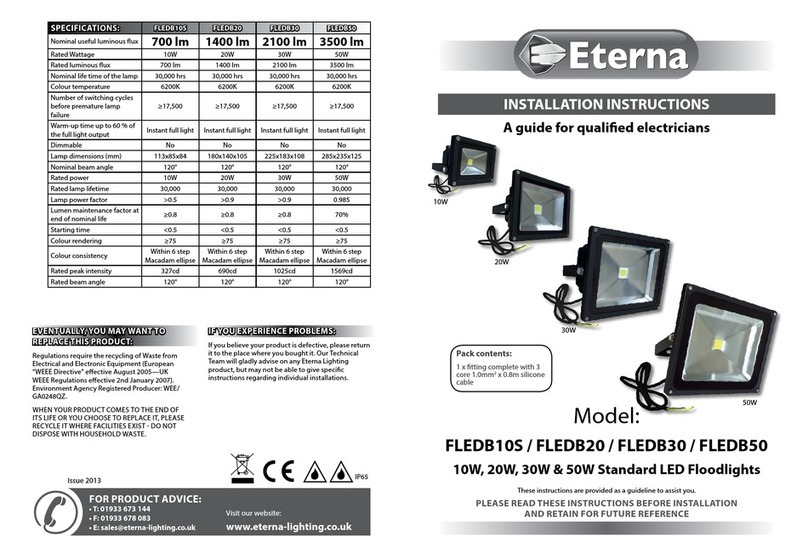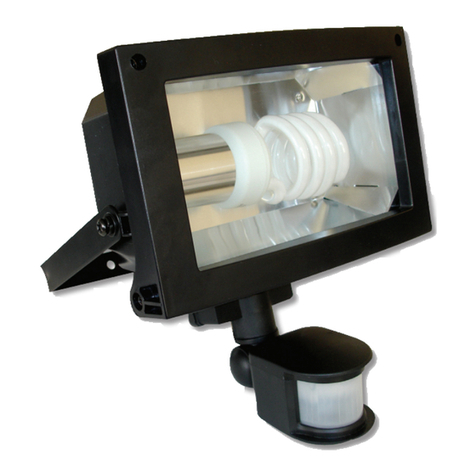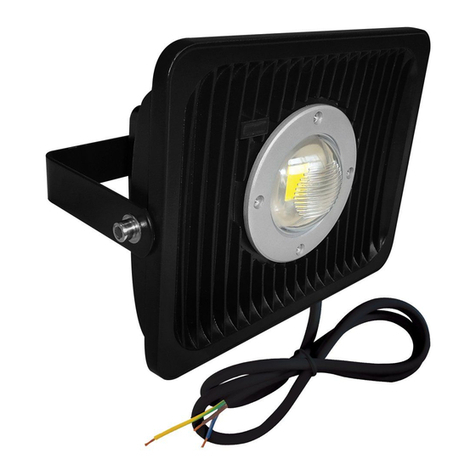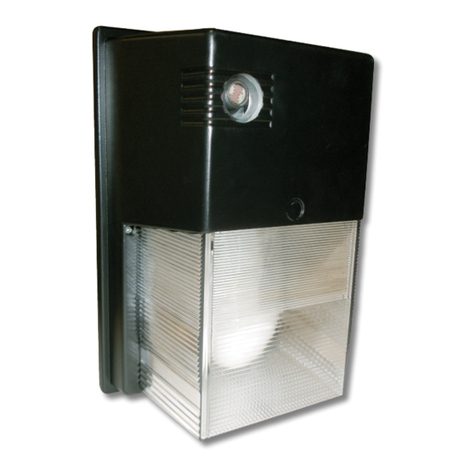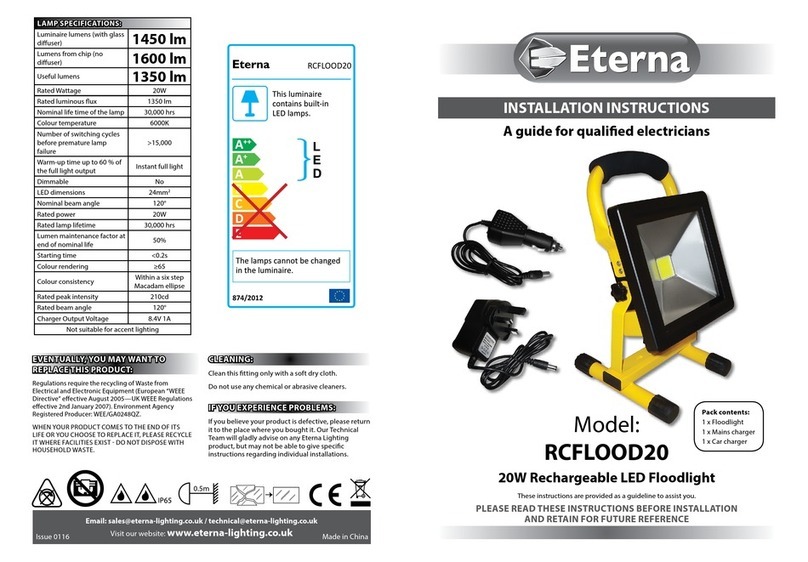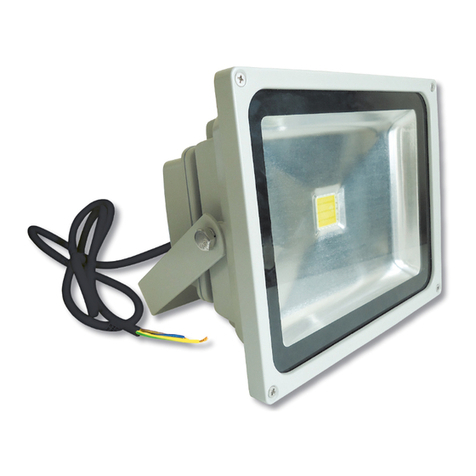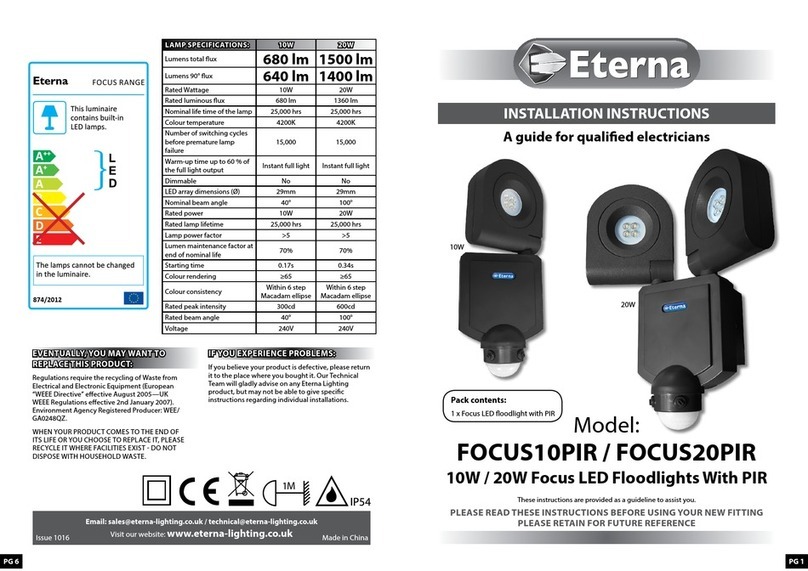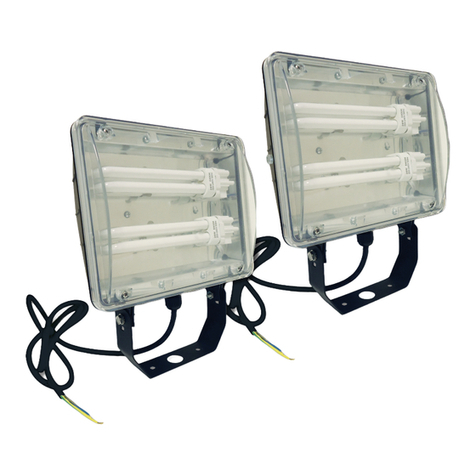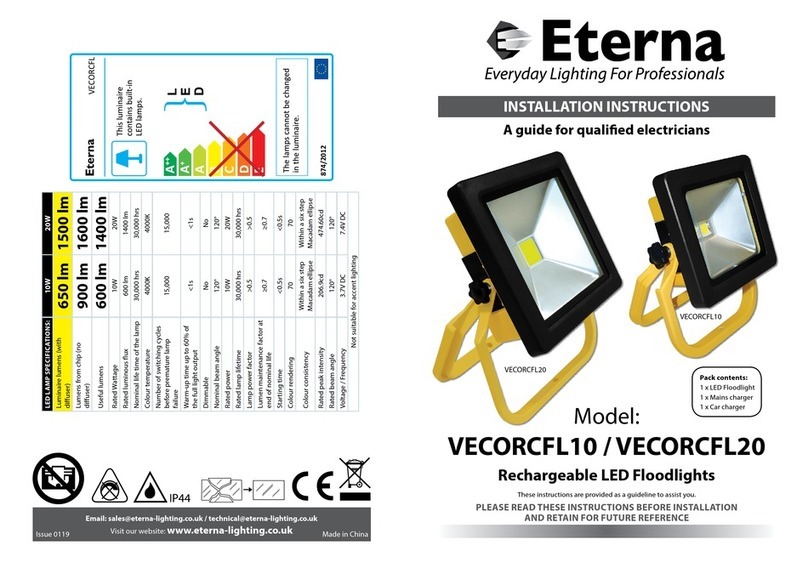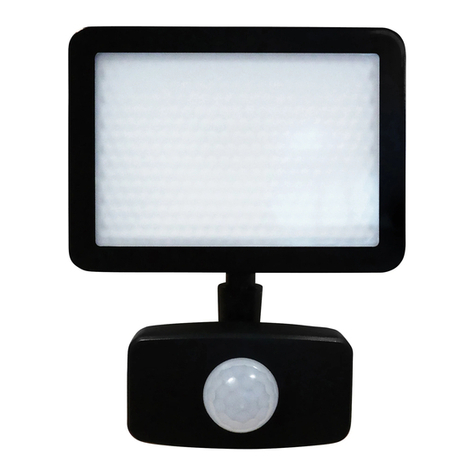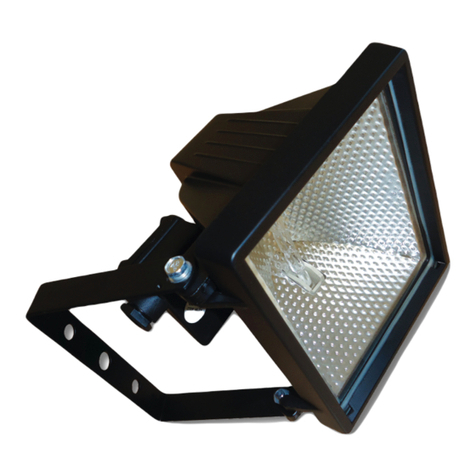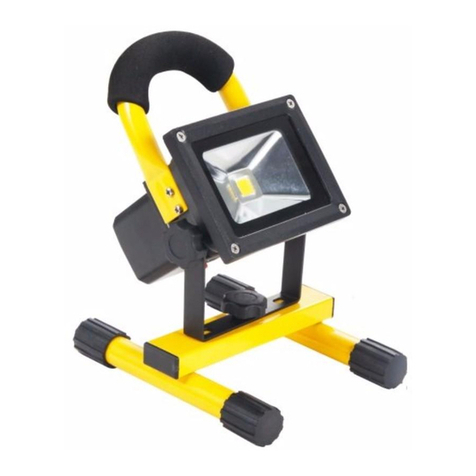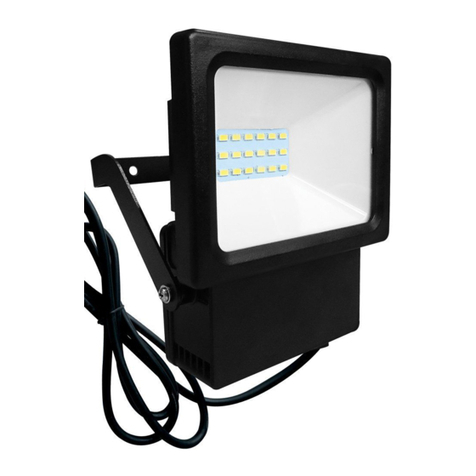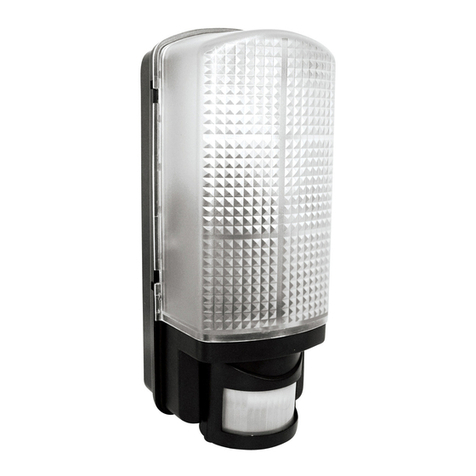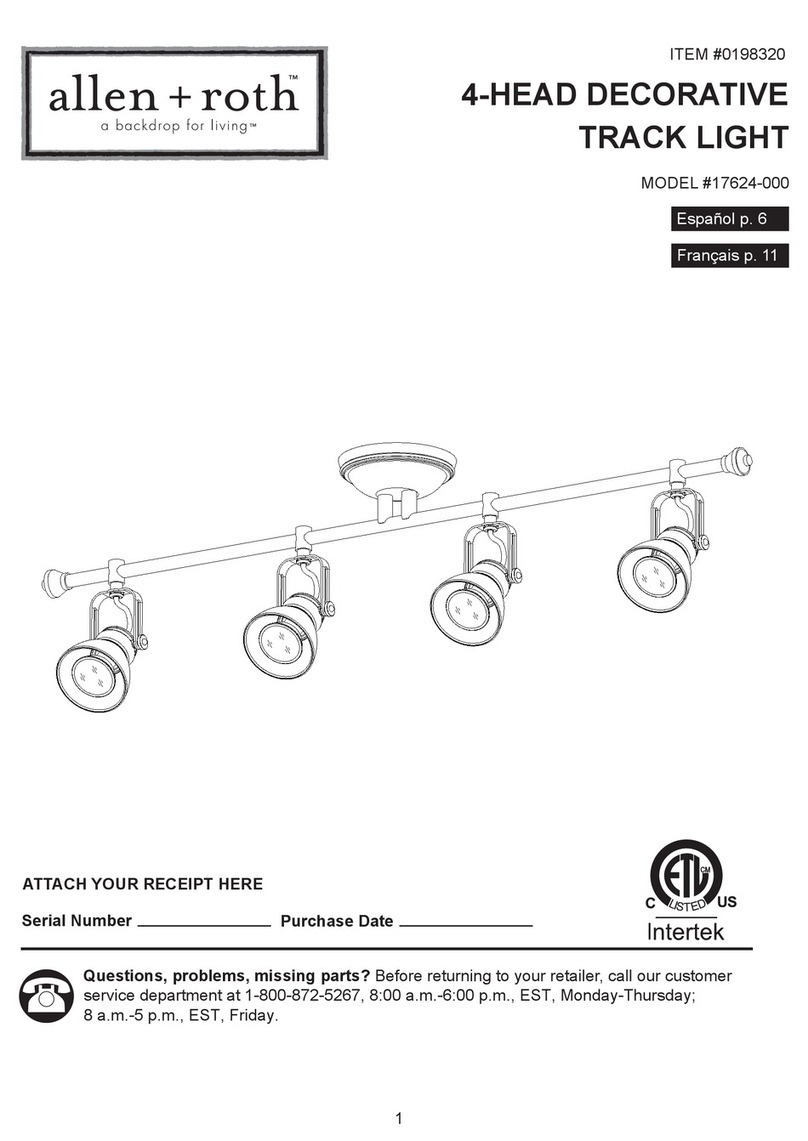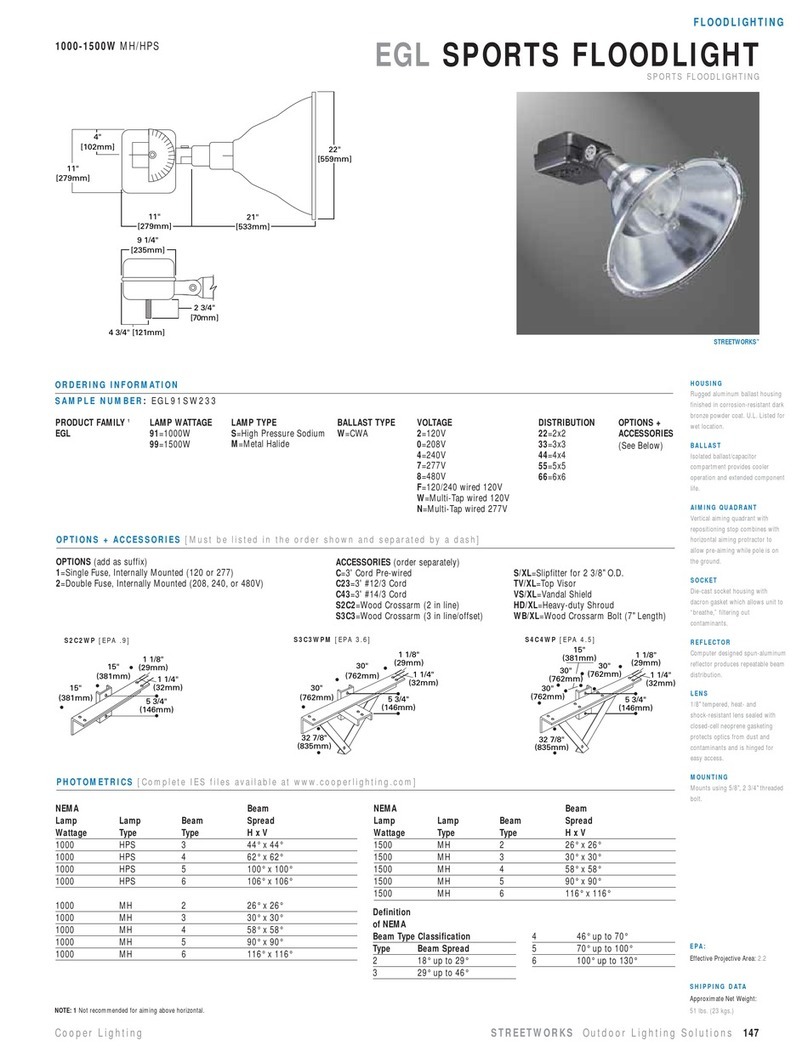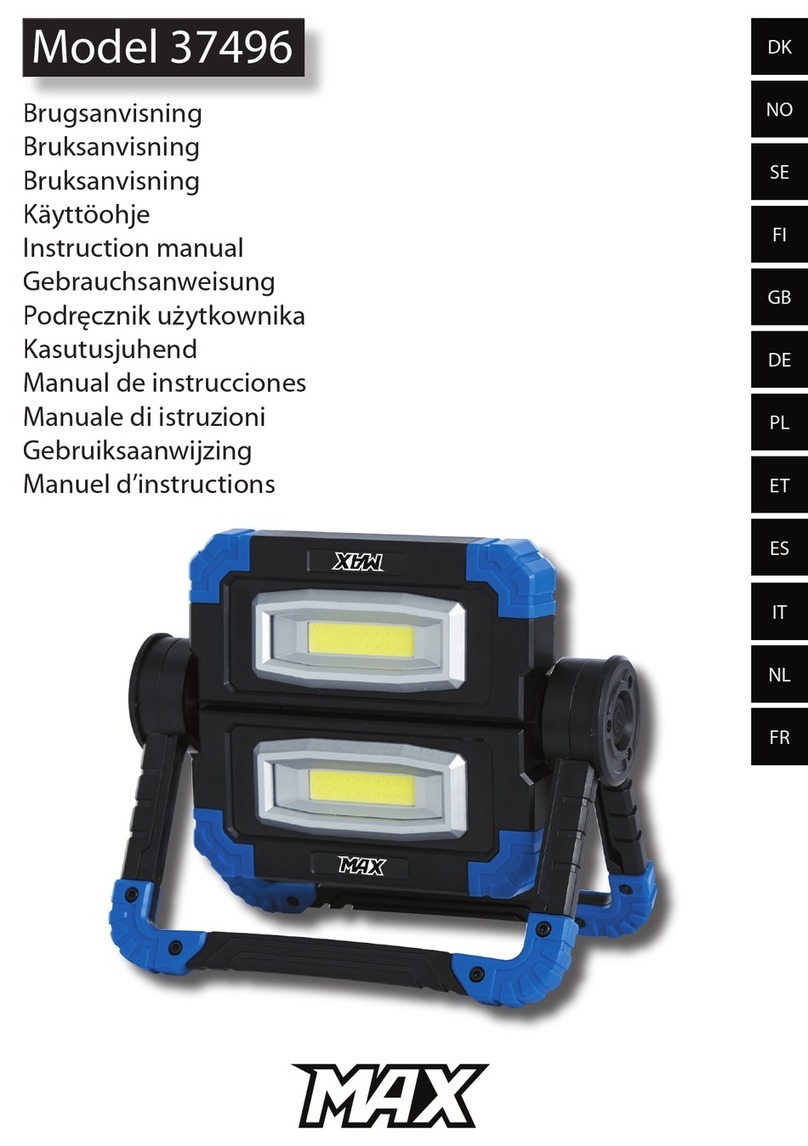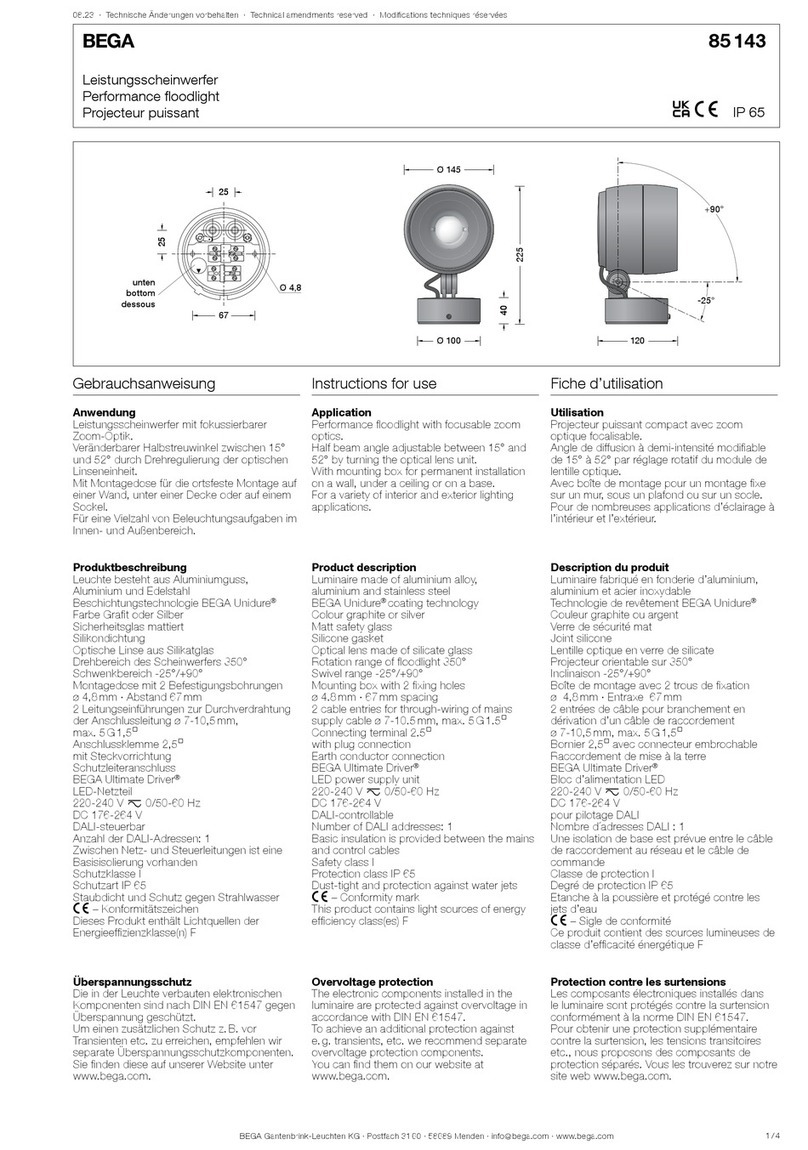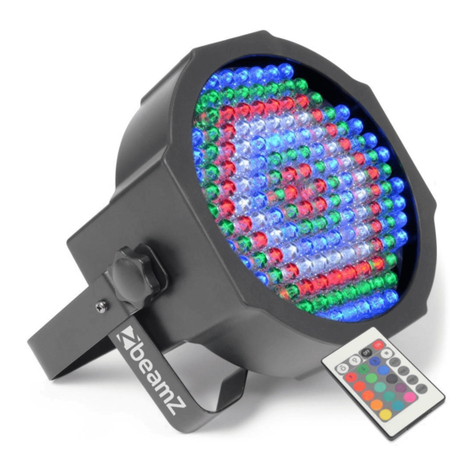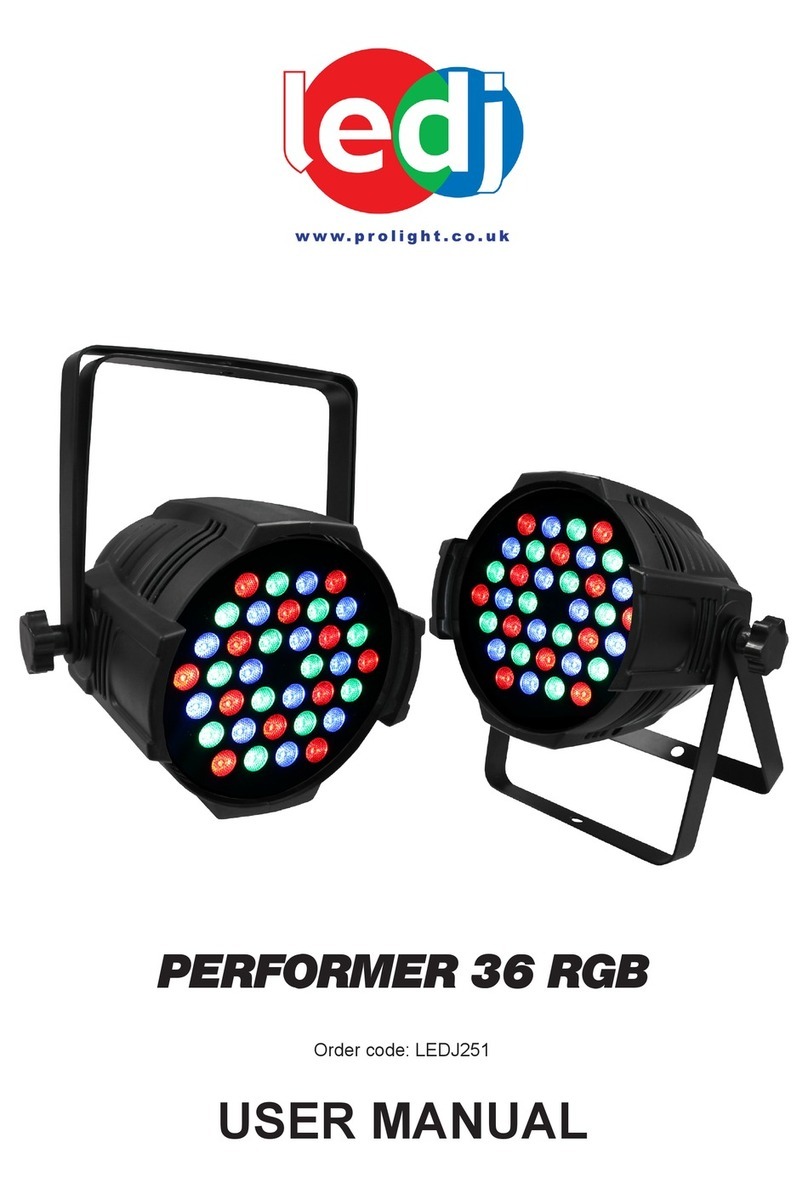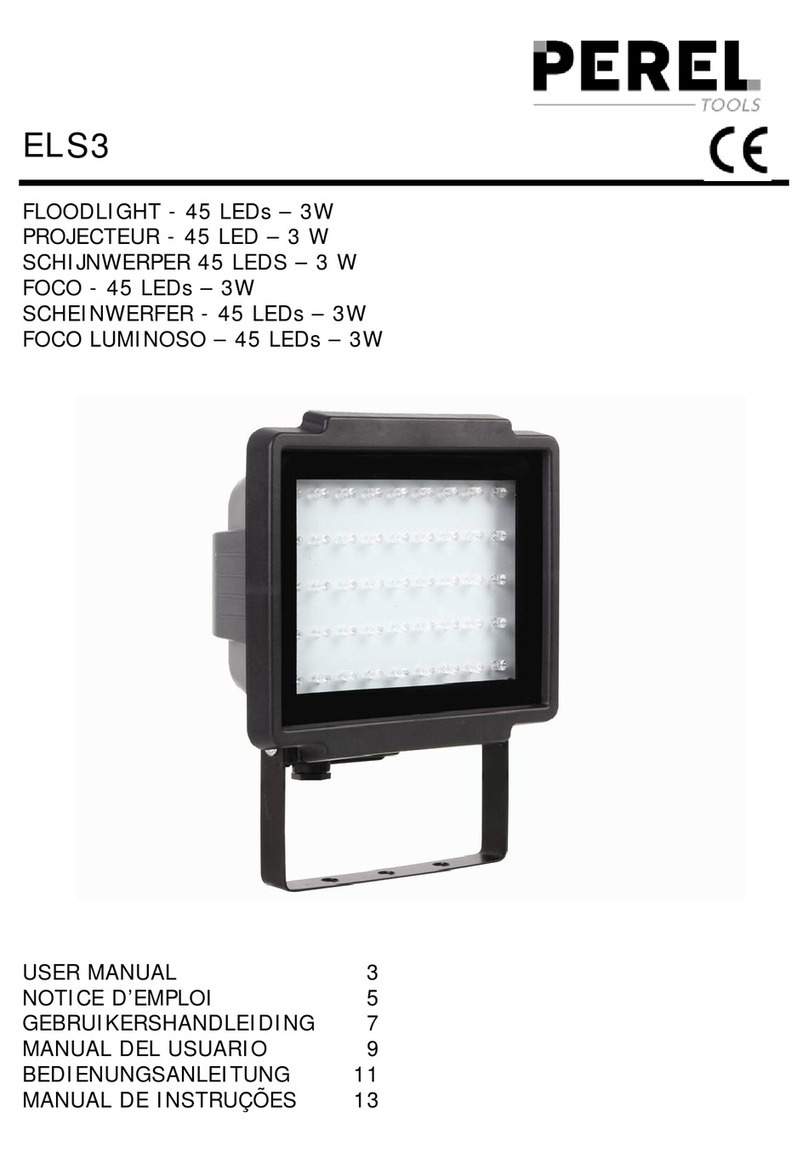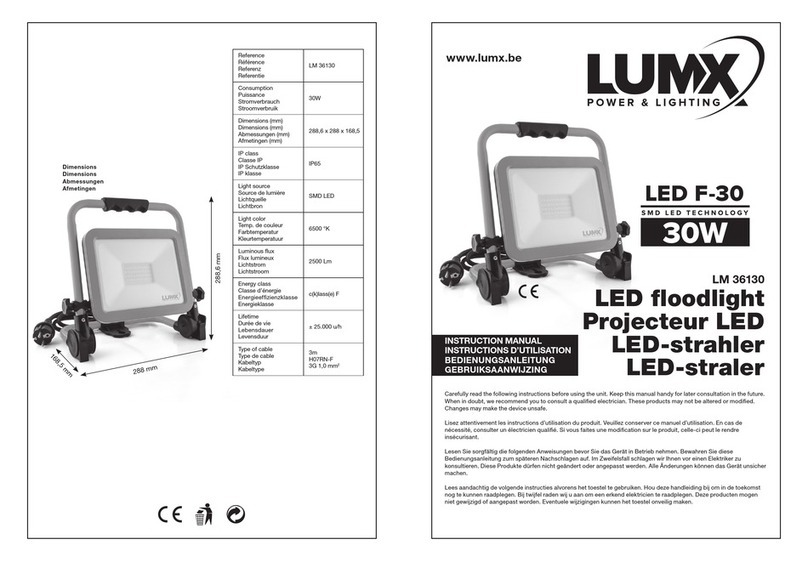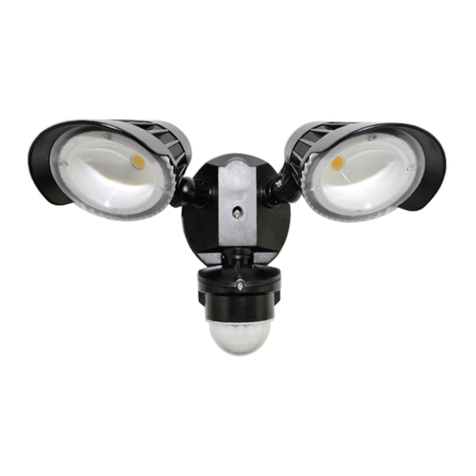
INSTALLATION:
When installing the PIR ood light refer to Fig.4 on
the previous page.
01) Switch o the mains before commencing
installation.
02) Remove the wall bracket from the tting by
removing the screws and nuts from each side.
Take care not to lose any of these parts as the
nuts are not captive within the tting - see g.4.
03) Using the bracket as a template mark and then
drill the appropriate xing holes.
04) Secure the bracket with suitable xings (not
supplied).
The oodlight is supplied pre-wired and has a
3-way terminal block in the houisng.
If you are using the 3-way terminal block go to
step 5, if not forward to step 7.
05) Unscrew the junction box cover screws and
remove cover, unscrew the gland nut and loosen
the cable restraint clamp. Connect the power
cable to the terminal block, see g. 4. Ensure the
cable passes through the cable gland and gasket.
06) Re-t the terminal block, tighten the cable
restraint clamp, tighten the gland nut and re-t
the cover.
07) Fix housing back into wall mounting bracket and
secure with screws, washers and nuts previously
removed.
09) Adjust the direction of the oodlight and tighten
the head xings ensuring that you have used the
lock washers.
10) Restore mains power.
11) Adjust the PIR sensor oodlight to the desired
settings.
IMPORTANT:
Loosen the lock nuts and screws on sensor and
oodlight before making any adjustments.
UNDERSTANDING THE CONTROLS:
(Please refer to Fig. 5 below)
ADJUSTING THE DURATION TIME:
The length of time the unit remains switched on after
activation can be adjusted from (5-10) seconds to
(8±1) minutes approximately. Rotating the TIME knob
from (+) to (-) will reduce the duration time.
Note: Once the light has been triggered by the PIR
sensor any subsequent detection will start the timed
period again from the beginning.
ADJUSTING THE LUX CONTROL LEVEL:
The Lux control module has a built-in sensing device
(photocell) that detects daylight and darkness. The
(R) position denotes that the oodlights can work
at day and night, and the () position only work at
night. You can set to operate the unit at the desired
level by adjusting the LUX knob.
ADJUSTING THE SENSITIVITY:
The sensitivity means the maximum distance which
PIR sensor can be triggered by movement - turning
the SENS knob from (+) to (-) will decrease the
sensitivity.
SETTING THE CONTROLS: WALK TEST
Turn the Lux control knob to light (R) ensure that the
TIME control knob is set at minimum duration time
(-) position (rotating the TIME knob anti-clockwise to
stop-position). The oodlight will now switch on and
remain on for about 5 seconds after each detection.
01) Direct the sensor toward the desired area to be
scanned by adjusting the swivel joint on the
sensor arm.
Important: loosen the lock nuts and screws
on sensor and oodlight before making any
adjustments.
02) Have another person move across the center
of the area to be scanned and slowly adjust the
angle of the sensor arm until the unit senses
the presence of the moving person, causing the
oodlight to switch on (refer to Fig. 2).
03) Adjust time control to required setting.
04) To set the light level at which the oodlight will
automatically switch “on” at night, turn the LUX
control knob from daylight (R) to night (). If the
oodlight is required to switch on earlier, e.g.
dusk, wait for the desired light level, then slowly
turn the LUX control knob towards daylight while
someone walks across the center of the area to
be detected. When the oodlight switches on,
release the LUX control knob. You may need to
make further adjustments to achieve your ideal
light level setting.
TROUBLESHOOTING AND USER HINTS:
Note: all passive infra red detectors are more sensitive in cold and dry weather than warm and wet weather.
PROBLEM POSSIBLE CAUSE SUGGESTED REMEDY
Light does not switch on
when there is movement
in the detection area.
1. No mains voltage Check all connections, and MCB Fuses / switches
2. Nearby lighting is too bright Redirect sensor or relocate the unit
3. Controls set incorrectly Readjust sensor angle or control knob
4. Wired incorrectly Check wiring and conrm its wired as per the
wiring diagram
5. Sensor positioned in wrong direction Adjust angle and direction of PIR for best results
walk across beam
Light switches on for no
apparent reason (false
trigger)
1. Heat sources such as air-con, vents, heaters, ues,
other outside lighting, moving cars trees or shrubs
are activating sensor
Adjust direction of sensor head away from these
sources. Reduce sensitivity (if available)
2. Animals / birds activating sensor Redirecting sensor head may help (Reduce
sensitvity settings)
3. Interference from on/o switching of electric
fans or lights on the same circuit as your security
oodlight.
(This problem does not always occur but a faulty
switch or noisy uorescent light may cause the
security oodlight to switch on)
Should the false triggering become, troublesome,
consider:
(a) Replacing a faulty switch
(b) Replacing noisy uorescent tubes and/or
starters
(c) Connecting the oodlight to a separate
circuit (in most cases where one or more of
the above suggestions have been carried out,
false triggering has been reduced)
4. Reection from swimming pool, or reective
surface such as smooth white walls Redirect sensor
Light remains on
1. Continuously false triggered Redirecting sensor head may help
2. Time is set too long Reduce time
Light remains on at
nighttime Possible heat source in detection zone
Cover PIR sensor lens with a thick cloth, if the
light turns o check detection area for heat or
reective source, reposition head and decrease
the sensitivity setting if this control is available
Light switches on during
daylight hours LUX control knob is set to daylight position Turn the LUX control knob to desired light level
setting
When setting the lux
controls in daylight
the detection distance
becomes shorter
Interference by sunlight Re-test at night
874/2012
MODELNO.
FL_SMDPIR RANGE
TIME LUXSENS
Fig 5: PIR Controls
PG 4 PG 5
